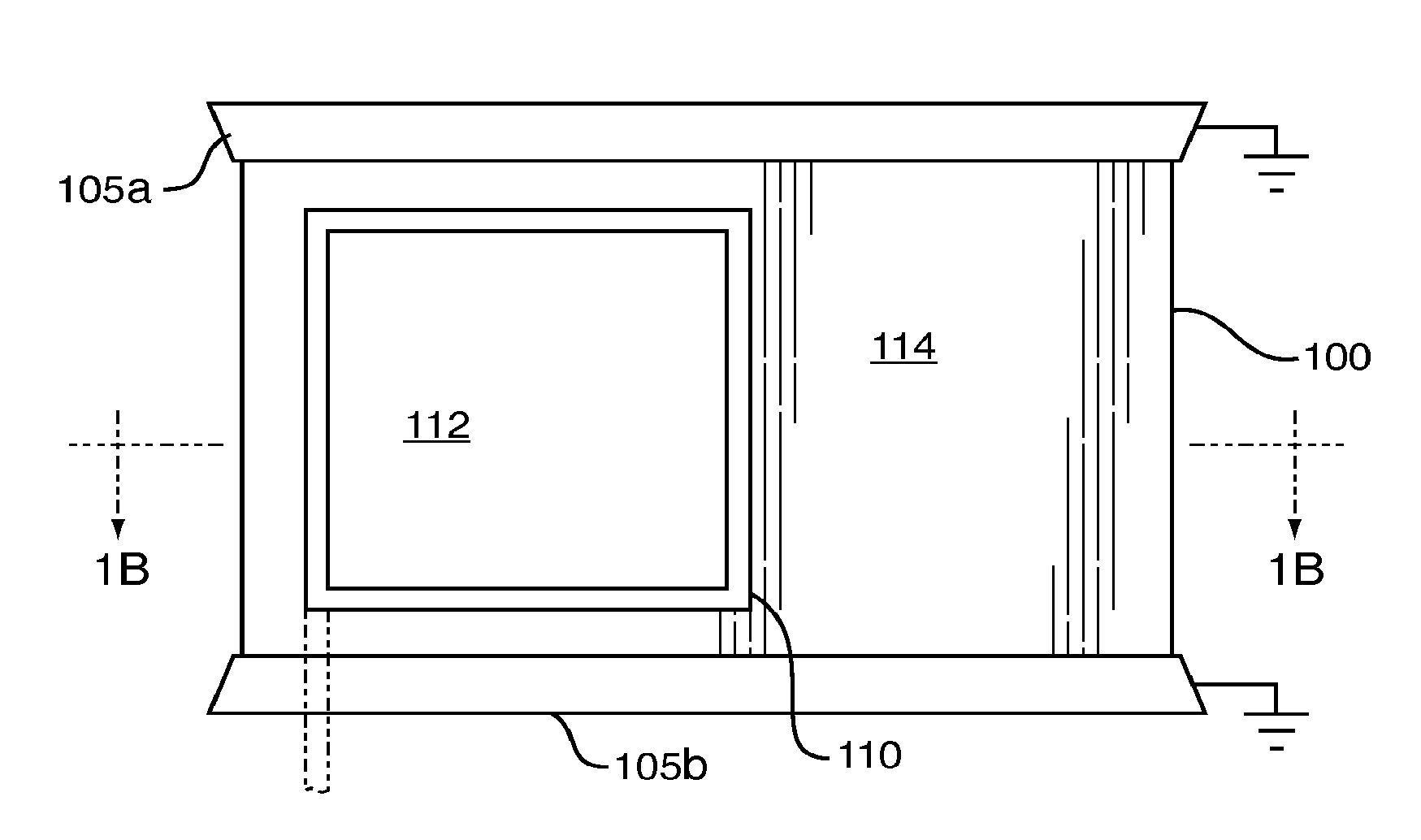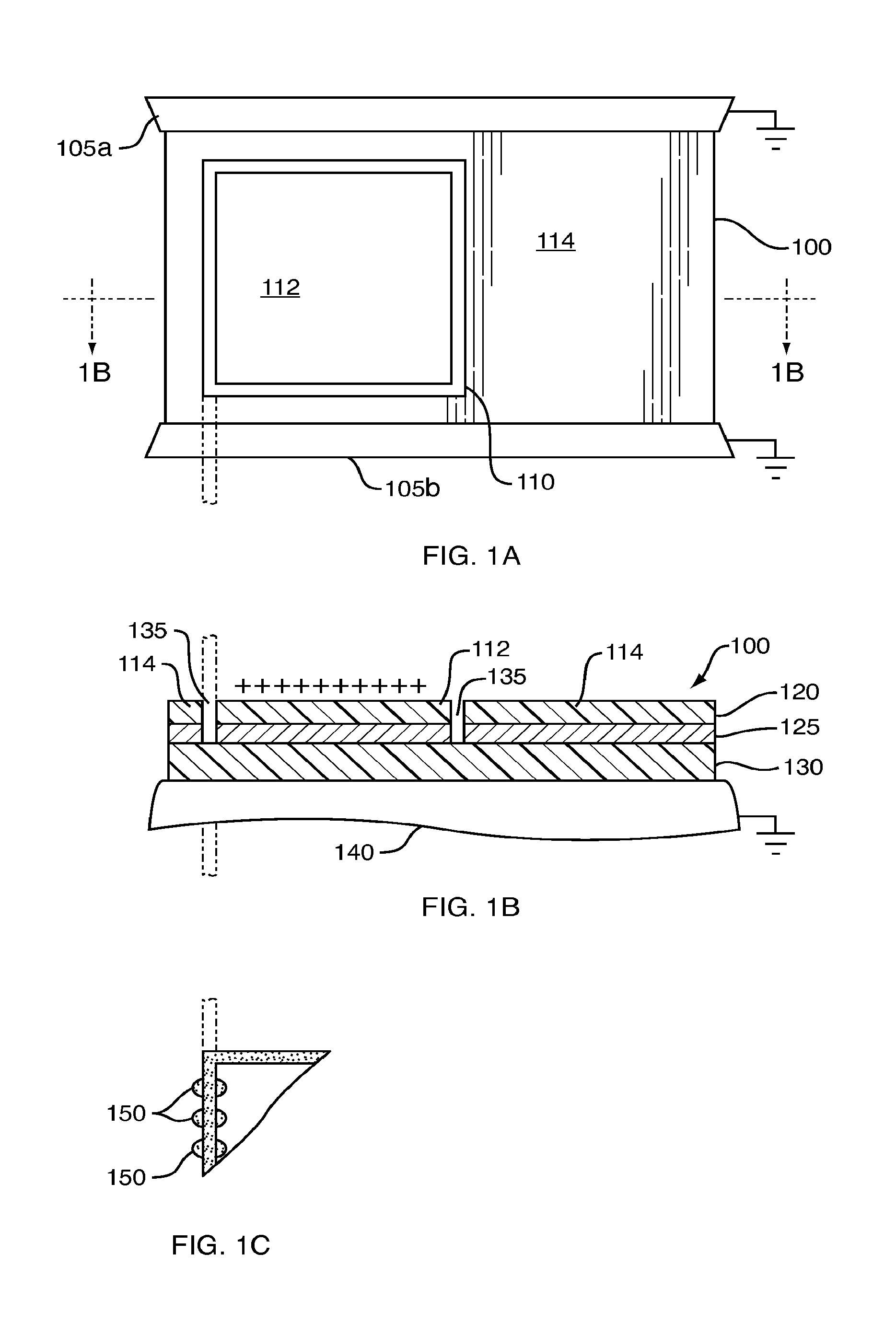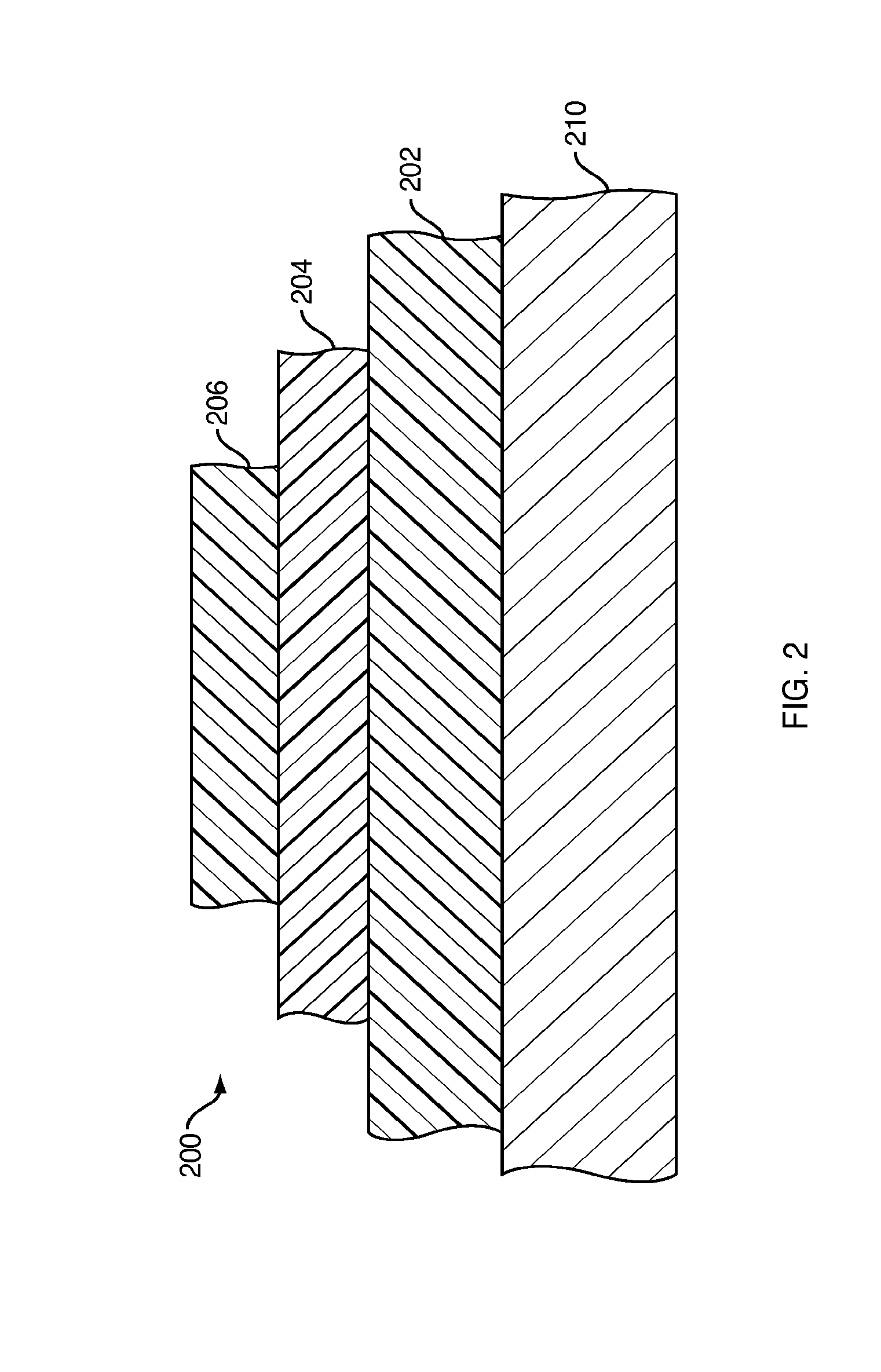Lithographic imaging and printing without defects of electrostatic origin
a technology of electrostatic origin and lithographic imaging, which is applied in the direction of rotary lithographic machines, lithography, transportation and packaging, etc., can solve the problems of electrostatic discharge (“esd”) events, accumulated charge trapped in these regions, and plate structure types that tend to undergo triboelectric charging, etc., to achieve fast and efficient cleaning and ease removal
- Summary
- Abstract
- Description
- Claims
- Application Information
AI Technical Summary
Benefits of technology
Problems solved by technology
Method used
Image
Examples
examples 1 and 2
[0070]Waterless printing plates in accordance with the invention generally include a carbon-polymer composite imaging layer 204 and an oleophobic top layer 206 disposed on a polyester substrate 202. A preferred substrate is a 175 μm white polyester film sold by DuPont Teijin Films (Hopewell, Va.) labeled MELINEX 331.
[0071]Suitable formulations for the carbon-polymer imaging layer are described below.
PartsComponentExample 1Example 2HRJ 123621.461.82Micropigmo AMBK-25.83—Renol Black RH HW30—9.56Cymel 3850.440.55Cycat 40400.440.55BYK 3070.090.09Dowanol PM91.75 87.44
[0072]HRJ-12362 is a phenol formaldehyde thermosetting resin supplied as a 72 wt % solid in a 60% n-butanol solution by the SI Group, Inc. (Schenedtady, N.Y.). MICROPIGMO AMBK-2 is a 20% solids proprietary carbon dispersion supplied by Orient Corporation of America (Kenilworth, N.J.). RENOL BLACK R-HW 30 is a carbon black preparation available from Clariant International Ltd. (Switzerland) in a granular form with a low-visc...
examples 3-5
[0080]Plates similar to those of Example 2 were prepared using carbon imaging formulations with different polymer co-binder resins. Formulation examples are given below for carbon layers made with the RENOL BLACK RH-HW30 carbon dispersion, but the MICROPIGMO AMBK-2 dispersion could also have been used.
PartsComponentExample 3Example 4Example 5Vinnol E-15 / 48A1.82——Novolak P2—1.82—Acryloid B-44——1.82Renol Black RH HW309.569.569.56Cymel 3850.550.550.55Cycat 40400.550.550.55BYK 3070.090.090.09Dowanol PM87.66 87.66 87.66
[0081]VINNOL E-15 / 48A is a vinyl chloride coating resin with hydroxyl functional groups available from Wacker Chemie AG (Germany). NOVOLAK P2 is an o-cresol and p-cresol phenolic resin supplied by Diversitec Corporation (Fort Collins, Colo.). ACRYLOID B-44 is a solid thermoplastic acrylic resin available from Rhom and Haas (Philadelphia, Pa.).
[0082]These carbon formulations were applied with a wire-round rod and dried and cured at 178° C. for about one minute to provide a...
example 6
[0084]In this example, the carbon and silicone layers as described in Example 1 were applied as described above onto a 200 μm (0.008 inch) anodized aluminum alloy (Alcoa, Pittsburgh, Pa.). The alloy was electrochemically etched and anodized to provide an anodic layer with Ra values in the order of 0.300 μm.
[0085]The plate was imaged, cleaned and ran on a Presstek 34 DI digital offset printing press as described in Examples 1 and 2. The cleaning process allows for complete removal of the silicone layer and partial removal of the carbon-loaded imaging layer in the exposed areas of the plate. Any residual carbon left on the exposed areas enhances the ink receptivity of the image areas of the plate. This printing member was run for more than 1,000 impressions without showing any ESD defects.
PUM
| Property | Measurement | Unit |
|---|---|---|
| temperature | aaaaa | aaaaa |
| thickness | aaaaa | aaaaa |
| thicknesses | aaaaa | aaaaa |
Abstract
Description
Claims
Application Information
 Login to View More
Login to View More - Generate Ideas
- Intellectual Property
- Life Sciences
- Materials
- Tech Scout
- Unparalleled Data Quality
- Higher Quality Content
- 60% Fewer Hallucinations
Browse by: Latest US Patents, China's latest patents, Technical Efficacy Thesaurus, Application Domain, Technology Topic, Popular Technical Reports.
© 2025 PatSnap. All rights reserved.Legal|Privacy policy|Modern Slavery Act Transparency Statement|Sitemap|About US| Contact US: help@patsnap.com



